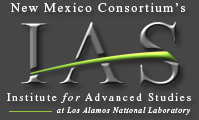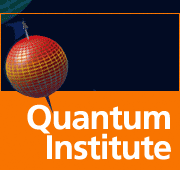

Speakers:
Eric Bittner
University of Houston
Irene Burghardt
ENS, France
Pratim Chattaraj
IIT, India
Detlef Durr
Munich, Germany
Alon Faraggi
University of Liverpool
Ned Floyd
Sonya Garashchuk
University of South Carolina
Sheldon Goldstein
Rutgers University
Gary Bowman
Northern Arizona University
Keith Hughes
University of Wales, UK
Craig Martens
University California, Irvine
Marco Matone
University of Padova, Italy
Salvador Miret-Artes
CSIC, Spain
Gerard Parlant
LSDMS, France
Eli Pollak
Weizmann Institute, Israel
Vitaly Rassolov
University of South Carolina
Brad Rowland
Universtiy of Texas
Angel Sanz
CSIC, Spain
Jeremy Schiff
Bar-Ilan University, Israel
David Tannor
Weizmann Institute, Israel
Clemens Woywod
University of Tromso, Norway
Robert E. Wyatt
University of Texas, Austin

BACK ROW: Dirk Deckert, Bob Walker, Bradley Rowland, Tim Coffey,
Vitaly Rassolov, Jeremy Schiff, Craig Martens, Jason McAfee,
Eli Pollak, Gary Bowman, David Tannor, Kisam Park.
MIDDLE ROW: Chia-Chun Chou, Julianne Kuck David, Robert E. Wyatt,
Sophya Garashchuk, Gerard Parlant, Eric Bittner, Salvador
Miret-Artes, Angel Sanz, Kieth Hughes, Toufik Djama.
FRONT ROW (seated): Jeremy Maddox, Ned Floyd, Shelly Goldstein,
Irene Burghardt, Brian Kendrick, Bill Poirier, Pratim Chattaraj,
Marco Matone, Alon Faraggi.
The conference proceedings book can be found here.
The Workshop on Quantum Trajectories will provide an interdisciplinary forum for chemists, physicists, and mathematicians to discuss both fundamental and computational aspects of the de Broglie-Bohm description of quantum mechanics. Particular interest will be focused on the computational methods that have been developed for solving the relevant quantum hydrodynamic equations and their applications in molecular and chemical physics. A solution to the quantum hydrodynamic equations is equivalent to solving the time-dependent Schrodinger equation. However, the quantum hydrodynamic approach allows for an entirely different class of numerical algorithms and approximations which could exhibit better computational scaling properties with respect to the dimensionality of the problem. Furthermore, the quantum hydrodynamic approach is intuitively appealing with its well defined quantum trajectories which give it the flavor of a semi-classical theory. If successful, this approach could open the door to a whole new range of applications never before amenable to exact quantum dynamical treatment, such as: proton transfer in enzyme catalysis and hydrogen adsorption/diffusion in materials.
Topical areas of impact include:
Bioenergy
Nanotechnology
Materials
Quantum Control
Organizing Committee:
Brian Kendrick Los Alamos National Laboratory
Bill Poirier Texas Tech University
Conference Coordinator:
Adam Shipman
(505) 664-0187
conferences@cnls.lanl.gov
Sponsors:

LANL's Theoretical Division


This material is based upon work supported by the National Science Foundation under Grant No. 0829345. Any opinions, findings, and conclusions or recommendations expressed in this material are those of the author(s) and do not necessarily reflect the views of the National Science Foundation.
